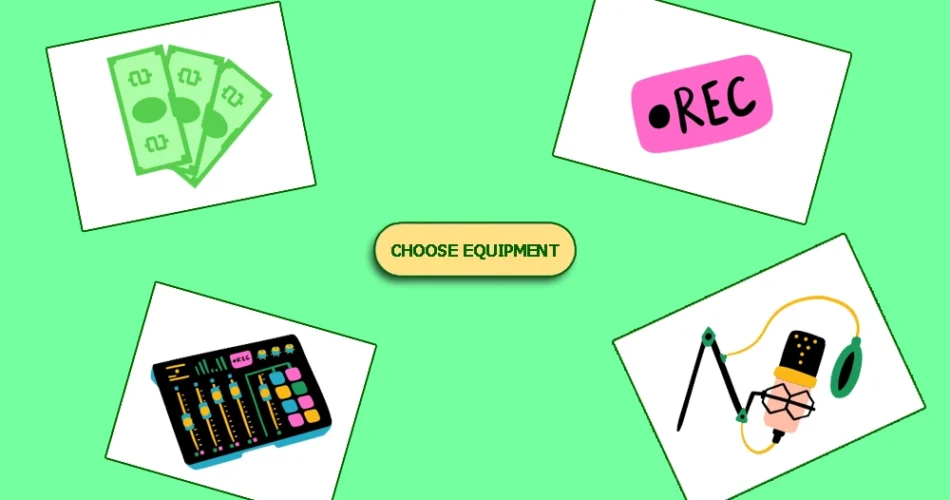
Equipment directly affects the quality of your audio, which is a crucial element of your podcast. If your audio is poor quality, your listeners may have a difficult time understanding what you’re saying, and they may not continue listening to your podcast. Good equipment ensures that your audio is clear, crisp, and easy to understand, which helps to create a positive listening experience for your audience.
Download our free guide.
1. Identify your budget.
Before buying equipment for your podcast, you need to determine how much money you can afford to spend. There are a lot of different options available at different price points, so knowing your budget will help you narrow down your choices.
2. Determine your recording setup.
Consider where and how you will be recording your podcast. Will you be recording in a quiet space or in a noisy environment? Or may be you will recording alone or with guests? Will you be recording in a studio or on the go? All of these factors will impact the type of equipment you need.
3. Choose your microphone.
The microphone is one of the most important pieces of equipment for a podcast. There are a lot of different types of microphones available, including dynamic, condenser, USB, and shotgun microphones. Consider your recording setup and budget when choosing a microphone.
4. Select your audio interface.
An audio interface is used to connect your microphone and other audio equipment to your computer or recording device. It allows you to control the levels and quality of your audio recordings. USB audio interfaces are a popular choice for podcasters because they are affordable and easy to use.
5. Consider headphones.
Headphones are important for monitoring your audio while recording. They can also help block out external noise and improve the overall quality of your recordings. There are a lot of different types of headphones available, so choose a pair that fits your budget and recording needs.
6. Choose your recording software.
There are a lot of different recording software options available, including Audacity, GarageBand, and Adobe Audition. Choose a software that fits your budget and recording needs.
7. Invest in other equipment as needed.
Depending on your recording setup, you may need additional equipment such as mic stands, pop filters, and soundproofing materials.
8. Test your equipment.
Before starting your podcast, test your equipment to ensure that everything is working properly. This will help you avoid any technical difficulties during recording.
See other podcast guides.


Comments